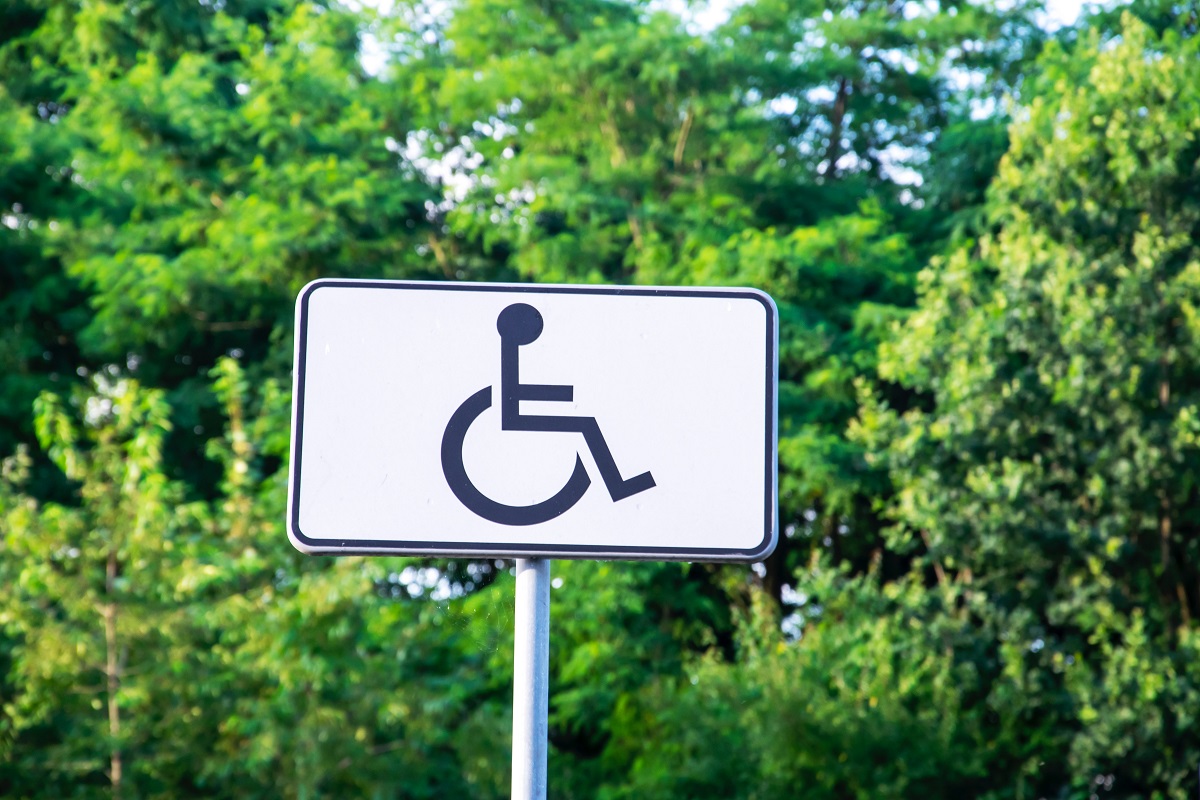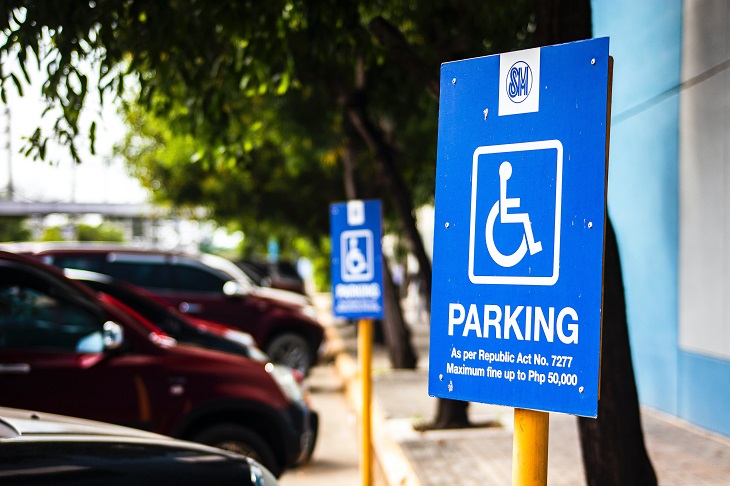Handicap Parking Etiquette: A Must-Know Guide For US Residents

In the United States, accessibility and inclusivity are fundamental principles that underpin our society. One important aspect of this is providing adequate accommodations for individuals with disabilities, including accessible parking spaces. Handicap parking spaces are not just a convenience; they’re a necessity for those who depend on them to lead a more independent and fulfilling life.
To ensure that these parking spaces serve their intended purpose, it’s crucial for everyone to understand and follow handicap parking etiquette. In this comprehensive guide, we’ll delve into the importance of handicap parking spaces, the laws and regulations governing them, and essential etiquette tips for US residents. Whether you already have a Hawaii handicap parking placard or are about to start your New Hampshire handicap parking application we’ve got tips for parking properly throughout the whole country!
The Importance of Handicap Parking Spaces
Handicap parking spaces are more than just painted lines on the pavement; they’re a lifeline for millions of Americans with disabilities. These spaces are strategically located near entrances to buildings, facilities, and public spaces to minimize the physical challenges faced by individuals with disabilities.
Here’s why they are so important:
1. Accessibility
The primary purpose of handicap parking spaces is to provide accessible parking for individuals with disabilities. These spaces are wider and closer to building entrances, making it easier for people with mobility impairments to access the facilities they need.
2. Independence
Accessible parking allows people with disabilities to maintain their independence. It enables them to go about their daily lives, whether that includes shopping for groceries, visiting a doctor’s office, or attending social events.
3. Safety
Handicap parking spaces are often equipped with features like ramps and curb cuts to ensure that individuals using wheelchairs, walkers, or other mobility aids can navigate safely. This enhances safety for both disabled and nondisabled individuals.
4. Legal Requirements
The Americans with Disabilities Act (ADA), a federal law enacted in 1990, mandates that businesses, public facilities, and state and local government agencies provide accessible parking spaces. Failure to comply with these regulations can result in legal consequences.
Understanding Handicap Parking Laws
To maintain the integrity and functionality of handicap parking spaces, it’s essential to be familiar with the laws and regulations governing them. The ADA sets the standard for accessible parking in the United States, but states and municipalities may also have additional requirements. Nebraska handicap parking rules may be different from Indiana handicap parking permit requirements, so whichever state you’re in, be sure to check your local rules and regulations.
1. ADA Requirements
The ADA outlines specific requirements for accessible parking spaces. Some of the key provisions include:
- Minimum Number of Spaces: The ADA mandates that a certain percentage of parking spaces (usually 2% of the total) must be designated as accessible parking spaces. The exact number varies depending on the size of the parking lot.
- Proximity to Entrances: Accessible parking spaces must be located as close as possible to the accessible entrance of the building or facility they serve.
- Van-Accessible Spaces: A portion of accessible parking spaces must be van-accessible, which means they have additional width and features to accommodate wheelchair-accessible vans.
- Signage: Accessible parking spaces must be clearly marked with the international symbol of accessibility, typically painted on the pavement and displayed on a sign. This is one thing that doesn’t really change between states – from California to Connecticut handicap parking signage will all feature the same symbol!
2. State and Local Regulations
As we mentioned, in addition to federal ADA requirements, individual states and municipalities may have their own regulations governing handicap parking. It’s important to be aware of these local laws as they can vary from place to place. State-specific requirements may include the number of accessible spaces required, penalties for violations, and specific design standards. Qualifying conditions may also differ – Mississippi handicap parking eligibility requirements may be slightly different from Delaware handicap parking requirements, for example.
3. Penalties for Violations
Parking in a handicap space without proper authorization or using someone else’s accessible parking permit can result in significant penalties. These can include fines, towing of the vehicle, and even the suspension of your driver’s license. It’s crucial to respect these laws to avoid legal consequences and to ensure that accessible parking spaces are available to those who truly need them.

Handicap Parking Etiquette: Tips for US Residents
Understanding the importance of accessible parking and the laws surrounding it is the first step. Practicing proper handicap parking etiquette is equally crucial. Here are some etiquette tips that every US resident should follow:
1. Use Only If You Qualify
Accessible parking spaces are reserved for individuals with disabilities who have valid permits. If you don’t have a disability or the necessary permit, never park in these spaces, even if it’s just for a few minutes. Using an accessible parking space without authorization is not only illegal, but also unfair to those who genuinely need it.
2. Display the Proper Permit
If you have a disability that qualifies you for accessible parking, ensure that you have the appropriate permit or license plate. The specific requirements for obtaining these permits vary by state, so check with your state’s Department of Motor Vehicles (DMV) or equivalent agency for the necessary information and application process.
3. Respect Van-Accessible Spaces
Van-accessible spaces are designed to accommodate wheelchair-accessible vans equipped with ramps or lifts. Even if you have a disability, if your vehicle doesn’t require this additional space, use a standard accessible space to leave the van-accessible spaces open for those who need them.
4. Avoid Parking in Access Aisles
Accessible parking spaces are often accompanied by access aisles marked with diagonal stripes. These aisles are meant to provide space for individuals with disabilities to enter and exit their vehicles safely. Never park in these access aisles, as doing so can make it impossible for someone to use their accessible parking space.
5. Respect the Time Limits
Some accessible parking spaces have time limits, indicated on signs. Be sure to adhere to these time limits. Overstaying your time limit can inconvenience others who need to use the space.
6. Keep the Area Clear
Accessible parking spaces often have extra room to accommodate mobility aids like wheelchairs and walkers. Always keep these areas clear to allow individuals with disabilities to move freely and safely.
7. Report Violations
If you notice someone parking illegally in an accessible space, consider reporting it to the local authorities. Many cities have dedicated hotlines or online reporting systems for such violations. Your action can help ensure that accessible parking spaces are available to those who need them.
How to Get a Handicap Parking Permit in the United States
Getting a handicap parking permit in the United States is a process that varies slightly from state to state, but generally follows a similar set of guidelines. From Idaho to Iowa handicap parking application will usually involve these steps:
1. Determine Eligibility
To qualify for a handicap parking permit, you typically need to have a medical condition that impairs your mobility significantly. Conditions may include difficulty walking, lung disease, heart conditions, visual impairments, or the use of mobility aids like wheelchairs or walkers.
2. Consult Your Healthcare Professional
The first step is to consult with a healthcare professional, such as a doctor or physician, who can evaluate your condition and determine if you meet the eligibility criteria for a handicap parking permit. They will need to complete a medical certification form, which is often available through the DMV website for your state. (If you need an online consultation with a doctor, Dr Handicap can help!)
3. Gather Required Documentation
Depending on your state, you may need to provide additional documentation, such as proof of identity, vehicle registration, and a valid driver’s license. Check with your state’s DMV or equivalent agency for specific requirements.
4. Complete the Application
Obtain the handicap parking permit application from your state’s DMV or download it from their website. Fill out the application form completely and accurately, providing all necessary information, including the medical certification from your healthcare professional.
5. Submit the Application
Submit the completed application, along with any required documentation, to your state’s DMV or the appropriate agency. This can often be done in person at a DMV office, by mail, or online, depending on your state’s procedures.
6. Pay Any Applicable Fees
Some states may charge a fee for a handicap parking permit. Check with your state’s DMV for information on the fee amount and payment methods.
7. Receive Your Permit
Once your application is approved, you will receive your handicap parking permit. This may come in the form of a placard, a license plate, or a special decal.
8. Renew when Needed
In most states you’ll need to renew your permit after a specific period, but as always, this differs – Louisiana handicap parking permit renewal periods may not be the same as those for Maryland handicap parking placard renewal! Check your permit’s expiration date and renew in time to continue to use disabled parking.
***
Handicap parking spaces are a critical component of ensuring accessibility and inclusivity for individuals with disabilities in the United States. To uphold the principles of fairness, legality, and respect, it’s essential for all US residents to understand the importance of these spaces, be aware of the applicable laws, and practice proper handicap parking etiquette. By doing so, we can create a more inclusive and supportive society where everyone has the opportunity to participate fully and independently in their communities.
Featured image by Królestwo Nauki on Pexels